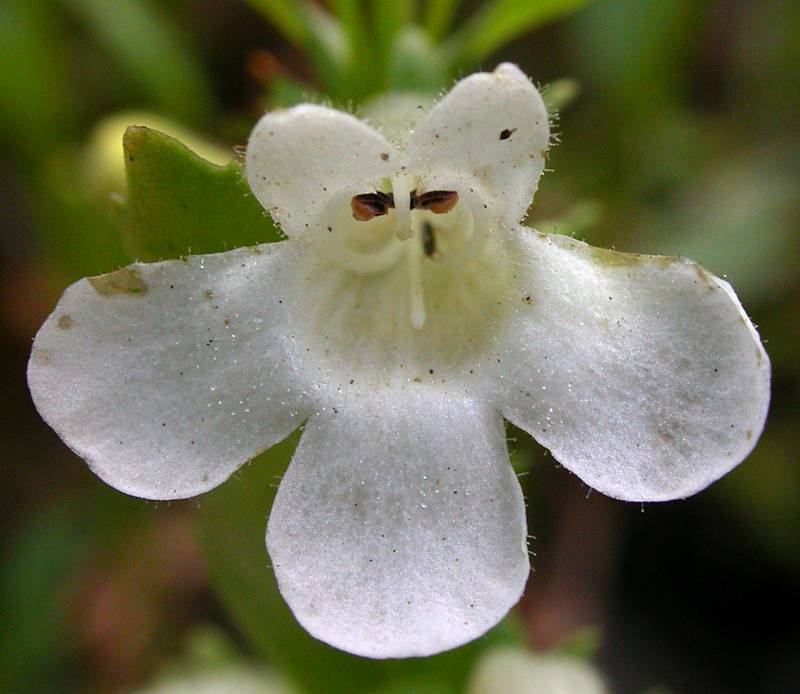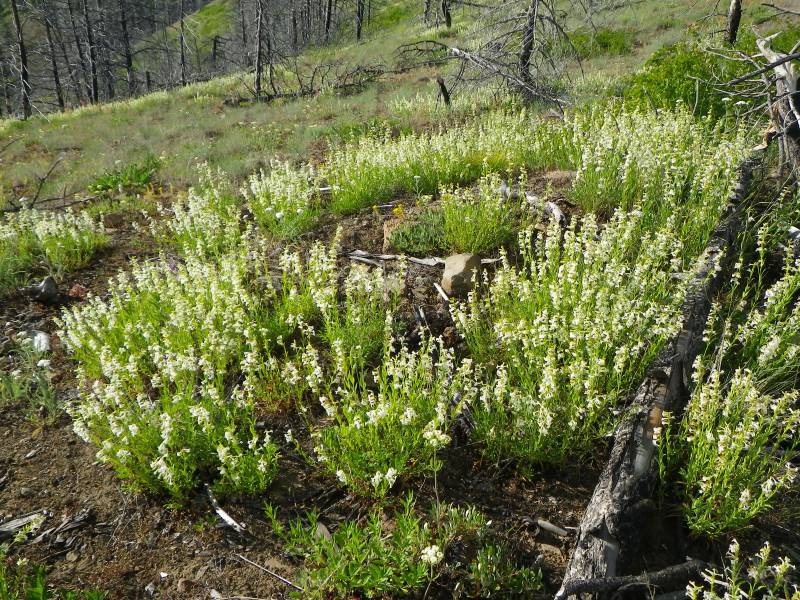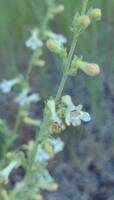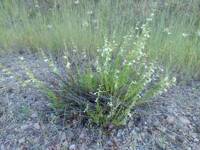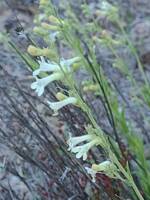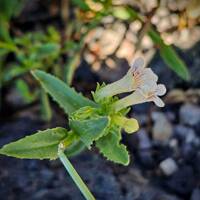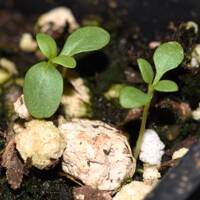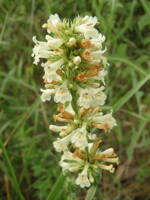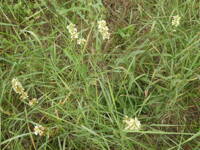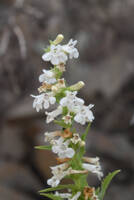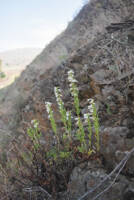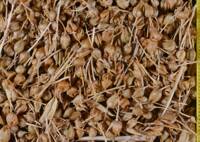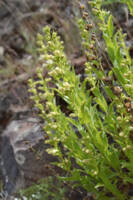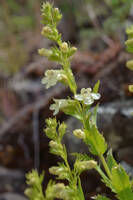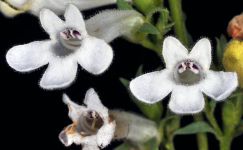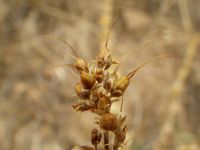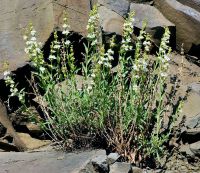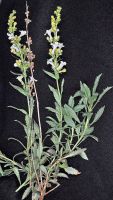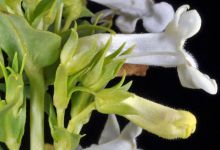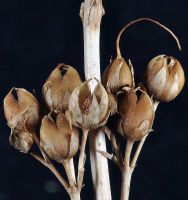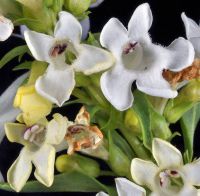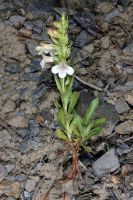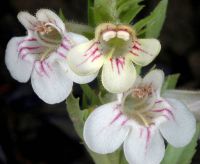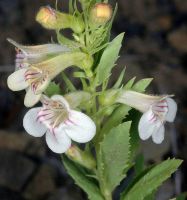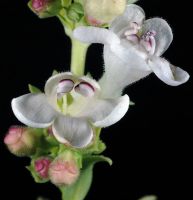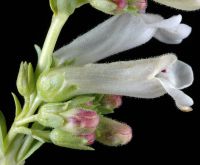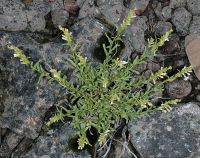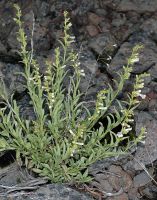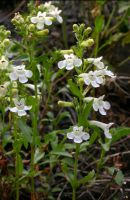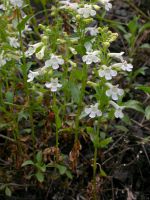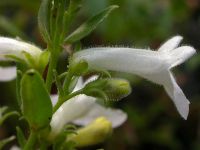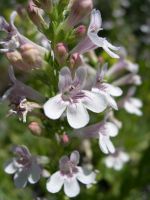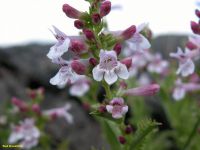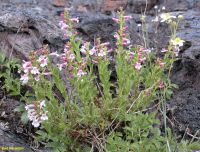Distribution: Occurring east of the Cascades crest in Washington; British Columbia to California, east to Montana and Utah.
Habitat: Open rocky roadsides, hillsides, and rock outcrops, sometimes in dry meadows, lowland to middle elevations in the mountains.
Flowers: May-July
Origin: Native
Growth Duration: Perennial
Conservation Status: Not of concern
Pollination: Bumblebees, bees, flies, wasps, hummingbirds
Plants with a much-branched, woody base, the flowering stems simple and erect, 2-6 dm. tall; plants usually glandular in the inflorescence, otherwise glabrous.
Leaves opposite, ternate, whorled or scattered, sharply toothed to entire; leaves on the short, sterile shoots oblanceolate to elliptic and short-petiolate, those on the flowering stems usually sessile and broad-based, up to 6 cm. long and 2.5 cm. wide.
Inflorescence of several verticillasters, often rather loose; calyx 2.5-6 mm. long, the 5 segments lanceolate; corolla dull whitish with some purplish lines within, sometimes washed with lavender, 8-20 mm. long, the tube narrow; staminode glabrous or hairy, not expanded toward the tip; pollen sacs 0.5-0.9 mm. long, glabrous, dehiscent throughout, widely spreading.
Capsule 3-5 mm. long.
Publication: Edwards\\'s Bot. Reg. 16: t. 1318. 1830.
-
var. deustus – hot-rock penstemon
 Occurring east of the Cascades crest in Washington; eastern Washington to southeastern Oregon, east to southwestern Montana and northwestern Wyoming
Occurring east of the Cascades crest in Washington; eastern Washington to southeastern Oregon, east to southwestern Montana and northwestern Wyoming -
var. variabilis – hotrock penstemon, scabland penstemon, scorched penstemon
 Occurring in the Columbia River Gorge in Washington in Klickitat County; Klickitat County to adjacent Wasco County, Oregon.
Occurring in the Columbia River Gorge in Washington in Klickitat County; Klickitat County to adjacent Wasco County, Oregon.
PNW Herbaria: Specimen records of Penstemon deustus in the Consortium of Pacific Northwest Herbaria database
WA Flora Checklist: Penstemon deustus checklist entry
OregonFlora: Penstemon deustus information
E-Flora BC: Penstemon deustus atlas page
CalPhotos: Penstemon deustus photos

